Abstract
The Ming Dynasty of China was the ruling dynasty from 1368 to 1644. Wearing hair ornaments as a fashion statement has been an important lasting tradition in Chinese costume history. This article analyzes the political and cultural connotations of women’s headdress throughout the social hierarchy of the Ming Dynasty. During those flourishing cultural and economic times, both the aristocracy and commoners used headdresses to pursue custom trends and to display their ability to consume material wealth. Fashion was a means of distinguishing social classes from one another–the aristocracy could flaunt their prestige by acquiring elaborate and costly hair ornaments, while the commoners intended to break class barriers by emulating the elite styles. The evolution of fashion throughout history reflects the social and esthetic rules of the time. The unique silhouettes, choices of materials, and design features of these headdresses took on different forms as social and cultural norms shifted. Women’s headdress from the Ming Dynasty were metaphors that signified impactful expressions of fashion and consumption throughout social ladders, which is still an influential cultural phenomenon that persists in today’s society.
Hairstyles and headdresses have always been highly regarded throughout ancient Chinese history. In the 16th century, Portuguese friar Gaspar da Cruz traveled to Southern China and recorded the following in his journal (da Gruz Citation1625, 97) –
(Men’s hair) stay as long as women’, tied tightly on top of the head, with a thin silver needle passing through… There is a superstition about hair: people can rise to heaven if their hair is long enough.
Spanish missionary Martín de Rada recorded similar observations as Cruz, with further descriptions of official’s headwear (de Rada Citation1575, 200) –
They are proud to have long hair. They let the hair grow long, made it a bun on top of the head, with a hairnet covering it, and separated it in the center to maintain and fix the hairstyle… The chief officials have another type of hat, which is woven with the finest thread, and the hairnet inside is woven with gold thread. They spend a lot of time combing their hair every morning.
Although these accounts do not fully capture the intricacies of Chinese hairstyles and headdresses of the time, they did describe many common practices found in both men and women, including long hair and the use of silver hairpins and gold hairnets. For Han people, the practice of maintaining long hair was considered a custom of paying respect to one’s parents and lasted until the mid-eighteenth century. Elaborate hairstyles served as both a practical way of containing one’s hair as well as personal adornment. Because of the coiffures and hair accessories closely associated with the societal value in ancient China, the style, material, color, and intricacy of craftsmanship found in headdresses became a way of delineating social status.
The silver hairpins described by Cruz had been used in China for thousands of years, with the earliest being discovered in a tomb dating back to the New Stone Age (Chunming Citation2001, 82). The headdresses worn by the emperor and the royal families were extremely luxurious and were only available to a small group of distinguished individuals. In contrast, headdresses used by scholars, government officials, and commoners were a more accurate reflection of the social and economic circumstance of the era.
From the fifteenth to seventeenth century, the economy, culture, and craftsmanship flourished in the Yangtze Delta region in China. The accumulation of wealth and commercial development allowed a group of women to break away from their social limitations, especially in terms of the traditional household duties of only assisting their husbands and raising the children. Since partially freed from social inequalities, women underwent a celebration of expression, which can be seen in rapid changes in their attires from styles to embellishments. The trailblazers of this movement were the wives and their personal servants of wealthy families. Since headdress is an essential costume component, creating the most luxurious, intricate, and luminous headdress became a central driver to this fashion movement.
In ancient Chinese society, regulations and restrictions regarding clothing materials, colors, and patterns were used to distinguish people of different classes. In the Collected Statues of the Ming Dynasty (1497), specific regulations on women’s headwear were established, creating a distinction between noblewomen and women from ordinary classes. Noblewomen included direct female relatives of court-appointed officers while commoners were individuals without official titles, such as business people, farmers, and the servants of official families.
The headdresses of noblewomen consisted of luxurious materials, including gold, silver, and other precious materials. Common women also had accessories adorned with fashionable ornaments. Although there has always been moral criticism over the use of expensive materials to flaunt one’s wealth, the consumption persists due to human’s materialistic desires. This transformed the ornamentation of headdresses in the Ming Dynasty into a symbol of wealth and social status when its cultural and social values extended beyond the objects themselves.
Headwear fashion among the noblewoman in the Ming dynasty
The headdresses of the upper class in the Ming Dynasty changed drastically from previous eras, signified by a new hair accessory called a “diji”(䯼髻), which was described in de Rada’s accounts as a “hairnet woven with gold thread.” (Zhishui Citation2003, 24). A “diji” was originally used as a wig and then evolved into a hairstyle in the Yuan dynasty (Ji Citation2001, 67). As wearing hats became a common practice among women, they started to use textiles to wrap the “diji,” eventually developing into a hat-like hard shell used to cover a chignon. de Rada observed that the gold thread woven nets were a popular “diji” style in the middle of the Ming Dynasty. Gold, silver, and gilded silver were commonly used materials to make “dijis.” “Diji” also became a headdress worn at formal events by married women.
The materials and style used in headdresses became a symbol that indicated a woman’s status. The novel in Ming Dynasty, The Golden Lotus, describes the importance of the “diji” in a woman’s status and social image (Xiaoxiaosheng Citation1617, 141). In the novel, when Li Ping-Er (a married woman) learned that Yueniang (wife of the leading male character), a woman of higher social status than her, did not possess a gold “diji,” she no longer wore her own gold “diji” in order to not disrespect a woman of higher status. Instead, she used the gold in her “diji” to make other hair accessories. In the same novel, a maidservant named Chunmei became a member of the upper class. Chunmei later encountered her former master as her own servant and the first thing that Chunmei ordered was to remove the “diji” from her former master’s head and for her to change into a servant’s uniform to cook in the kitchen. These two stories illustrate the importance of the “diji” as a symbol of a woman’s status.
In the Ming Dynasty, noblewomen had to completely cover their hair using accessories during formal occasions out of courtesy and to show their demureness. Other accessories were also used on top of a “diji,” creating a complete set of headgear. and show the gilded silver “dijis” worn by the wives of Shanghai officers during the sixteenth century. the front and back views of two different “dijis”, exhibiting a variety of hairpins worn with the “diji”.
Figure 1 Gilded silver Dijis, late sixteenth century. Unearthed from the tomb of an official couple on Wanping South Road, Shanghai. Ming Tombs in Shanghai, Beijing: Cultural Relics Publishing House.
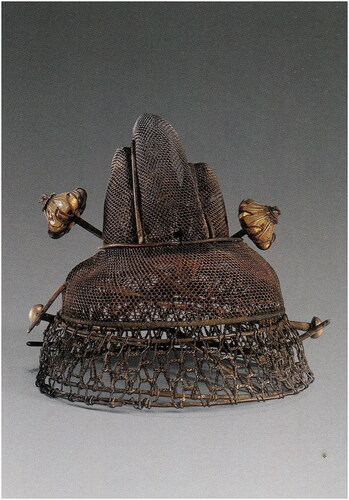
Figure 2 Gilded silver Dijis, about the sixteenth to the mid- seventeenth century. Unearthed from the tomb of Li Huili middle school in Luwan District, Shanghai. Ming Tombs in Shanghai, Beijing: Cultural Relics Publishing House.
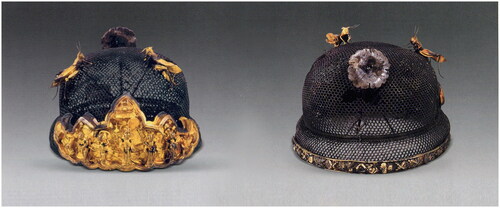
With the support of a “diji,” the size and style of hairpins became more complicated and exaggerated. People were able to use a fine, long hairpin inserted into the metal mesh at any position. The hairpin that is placed on top in the middle of the “diji” is the most important, both as a focal point and to prevent the “diji” from shifting out of place. The surrounding hairpins are named based on their placement. The styles evolved from a single, long hairpin to many other decorative themes. two popular designs of hairpins, including a floral and a butterfly design. The butterflies and peonies are made from gold leaf. The back of the butterfly is decorated with sapphires surrounded by three peony flowers. Each center of each peony is an embedded ruby. They are all soldered to a silver pin. In addition to these floral hairpins, there are other themes including animals, humans, landscapes, architectures, religions, and other storytelling scenes. a mountain-shaped hairpiece with human figures at a pavilion scenery. This ten-centimeter hairpiece is made of gold thread and depicts an upper-class woman surrounded by greenery and servants. In front of her, there is a crane. By her sides are servants holding objects such as fans and a pipa (琵琶, a traditional Chinese instrument), each with different facial expressions. The detailed craftsmanship and extravagant materials reflected the luxurious lifestyle enjoyed by noblewomen. The intricate engravings found in these headgears brought together real-life and imaginary myths and religions to create beautiful, abundant, and worry-free scenes. As an outcome, people no longer pursued natural hairstyles and instead, used “diji” to completely cover their hair, which created purposes to use new and exciting accessories to embellish their “dijis” to reveal their status and wealth.
Figure 3 Butterfly peony gold hairpin, about the sixteenth to the mid- seventeenth century. Unearthed from Qingyang Ming Tomb in Jiangyin, Jiangsu Province. The Gems of Jiangyin Relics. Beijing: Cultural Relics Publishing House.
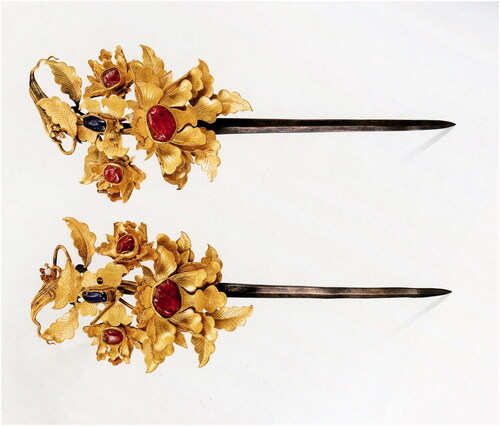
Figure 4 Mountain shaped gold hairpin with Pavilion characters, early sixteenth century. Unearthed from Changjing Ming Tomb in Jiangyin, Jiangsu Province. The Gems of Jiangyin Relics. Beijing: Cultural Relics Publishing House.
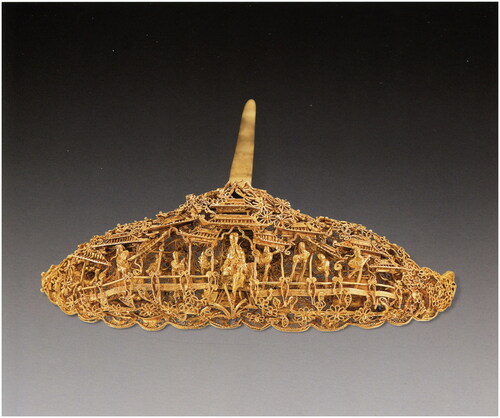
Furthermore, the wealthy used designs to express their wishes. As shown in , a headpiece was found in the grave of Lu Shen, a civil officer in Shanghai. This headpiece was made of gold and jade and was inscribed with the Chinese character for “longevity” (寿). Other ornaments found in the grave included religious symbols like the lotus flower, koi, jade gourd, and Guanyin Bodhisattva. These kinds of religion-inspired themes were influenced by Emperor Jiajing, a believer of Taoism. He was very obsessed with the witchcraft of immortality that he neglected government affairs for over twenty years (Zhengshu Citation1985). However, people still considered being a government official as the most coveted career path. The financial benefits brought by political status guaranteed a comfortable lifestyle. During the mid and late Ming Dynasty, the acceptance rate for civil service exams fell, and families such as Lu Shen became worried for their futures. By mirroring the emperor’s faith in their practices and paying respects to the deities that he believed in, families hoped that good fortune would be brought upon them in their government careers and futures.
Figure 5 A headwear made of gold and jade carved with the Chinese character for “longevity,” about the middle and late sixteenth century. Unearthed from the tomb of Lu Shen family in Shanghai in Ming Dynasty. Ming Tombs in Shanghai. Beijing: Cultural Relics Publishing House.
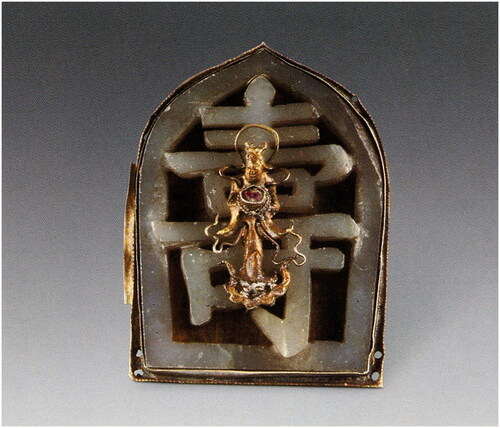
Other than auspicious symbols, other designs in headdresses included animal figures such as rats, insects, frogs, mantises, and locusts. An example is shown in , a gilded silver hairpin worn by an officer’s wife. It is adorned with two mantises. Although the golden luster has faded over time, the lively insect figures suggest that a contest between the two insects may begin at any time. The fruits and insects on the hairpin were inspired by drawings portraying rural households during the Song Dynasty that became popular in the Yuan and Ming Dynasties (Zhishui Citation2008, 51). Insect and plant elements bring playfulness and liveliness into an ornate hairpin made from expensive silver and gold. People believed that wearing this kind of design could ward off evil spirits and bring them good luck.
Figure 6 Gilded silver Mantis hairpin, about the late sixteenth century. Unearthed from the tomb of Zhu Shoucheng and his wife in Baoshan District, Shanghai, Ming Tombs in Shanghai. Beijing: Cultural Relics Publishing House.
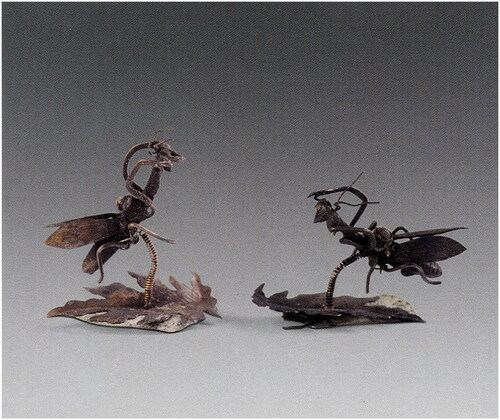
The headdresses of the upper class required sophisticated craftsmanship and intense labor. These products, made from gold, silver, jade, and other precious materials, relied on traditional carving skills developed through generations of artisanship. These headdresses were only available to the upper class due to the material cost and required craftsmanship. Such luxurious levels of consumption required a formidable and sustained income, something that was only possible for appointed government officials (Jiafan Citation2018, 47). This explains why families like Lu Shen’s regarded high political power as important as life itself. They expressed their desires for longevity, felicity, and a flourishing government career path through the designs and embellishments used in their headgears.
The pursuit of fashion by common women in the Ming dynasty
Unlike the well-documented aristocratic costumes, researching common women’s costumes relies on reading and interpreting existing literature, illustrations, and local chronicles. Changes in headwear were always associated with changes in hairstyles. There were many different hair accessories used to enhance different trends in hairstyles during the mid and late Ming dynasty that had various names. Qiyuan (1565–1628), an officer in the city of Nanjing, recorded the quick changes in women’s hairstyles that he observed (Citation1617, 1422): “The size, particularly the height, and the designs of hair ornaments drastically changed within two to three years. People’s jaws dropped when they saw these huge differences in women’s coiffures.” Overall, the most significant changes in hairstyles were their increasing voluminosity (Baoliang Citation2004, 248). The sizes of dijis, the styles of hairpins, and the ways in which they were worn became more complicated and rapidly changed in parallel with changing hairstyles. According to the local chronicles of Songjiang Mansion during the Chongzhen era (Yuegong and Jiru Citation1630), women’s hair buns in the past were small. Later, buns were arranged to lean backward and named Chunyang buns. When a “Liang” (梁), a dome-shaped barrette worn with a long hairpin by men to secure the twisted bun on top of the head, was adopted into Chunyang bun, the style was named as official bun (官髻). Chunyang buns were also decorated with pearls, beads, jade jewels, and dragon and phoenix motifs. The hairstyles and hair accessories became anchor pieces for fashion advancement in that era. The same local chronicle also documented the evolution in socks, shoes, dyes in textiles, and styles of embroidery. All of these demonstrated how fashion movements could be driven by wearable elements and decorative details as a part of material culture embedded in a long-standing conservative society.
These changes in hairstyles and accessories often originated in economically well-developed, urban areas such as Suzhou, a city located in the Yangtze Delta area. As the economic center of the country in the Ming dynasty, Suzhou also became the fashion capital of China. Costumes centered around headdresses worn by Suzhou women were called Suzhou style (Jinmin Citation2018, 93). A vintage Suzhou costume style combined with light makeup, novel hats, and headscarves and change sleeve sizes was developed in Suzhou. It soon spread to its neighboring counties Songjiang and Jiaxing and later turned out to be very popular in Naijing. Eventually, it became a nationwide fashion phenomenon in the mid and late Ming dynasties. Suzhou became a synonym of fashion in many perspectives. People favored Suzhou style, imitating Suzhou artifacts and architecture, playing Suzhou operas, and drinking Suzhou alcohol. In fact, consumers categorized all new and rare things as Suzhou style. Using headdresses and hairstyles to drive the fashion movement increased its influence and spreading power among large populations in extensive geographic areas. The new designs of costumes started in Suzhou were continuously embraced and emulated by people in other regions until the late Qing dynasty.
Another way of how common women pursued fashion was to dress themselves up in gentry apparels. Opportunities for common women to get close to royal families and elites were to be employed by them as private servants or courtesans. The increase in productivity reduced labor demands. The surplus laborers from rural villages migrated into cities and were recruited into service and entertainment industries as many became coachmen, servants, maids, and prostitutes. William Thompson pointed out that extreme wealth could stimulate admiration and imitation, leading people to adopt unethical behaviors and become greedy (Citation1997, 164). As eyewitnesses of the lavish lifestyles of aristocracy, common people started to imitate their masters’ styles and challenge traditional dress codes and social class. According to another local chronicle of Wucheng County written during the Chongzhen era (Yichun and Shougang Citation1991), servants who worked for elite families wore headscarves and hats supposed to be worn by people with higher social status and constantly changed styles. A Shanghai government official who served from the late Ming dynasty to the early Qing dynasty, Ye Mengzhu, mentioned in his journal how the dress code between classes was overstepped during the late Ming dynasty (Citation1691, 201). His interpretation of why this occurred was because females were isolated from the outside world, which provided them with private platforms to freely overdress themselves, while males’ appearances were restricted by their participation in social activities. This practice started within the official and rich families and was copied by their maids and servants, which soon spread to their neighbors and relatives. People took the pride in wearing upper-class attire and it was considered a disgrace to not be able to afford to do so. The small quantity of esteemed consumer products originally designated for elites stimulated overspending in the greater population. Gradually, this overconsumption evolved into a lifestyle in the mid and late Ming dynasty reflected in all aspects. The script in the chronicle of Changshu County in the Jiajing era described how people admired ornately decorated houses, were addicted to exotic food, and indulged in singing and dancing for entertainment. Many ceremonies, such as weddings and funerals, were held on such excessive scales that exceeded affordability (Rubi and Fu Citation1539). Families could be bankrupted or in deep debt after pursuing such costly events (1571).
The ever-changing designs in headdress in the Ming dynasty led to common women chasing fashion styles blindly and without reason. In the presence of the accepted trends belonging to common women, any fashion-related activities could be extended to different aspects of daily life. From hairstyles, hairpins, hats, and clothing to lifestyle and philosophy, nothing was everlasting. A desire for the new over the old shaped the common women’s costume development at that time. Stimulating by increased financial prosperity, a group of common people pushed for social mobility by pursuing the elites’ extravagant life quality and emulating their fashionable costumes and lifestyles.
Fashion esthetic and rules in the Ming dynasty
The definition of glamor was always defined in the ruling class in traditional Chinese societies, and the Ming dynasty was no exception. There were always strict rules applied to designs and materials used in women’s headwear based on their social status (Dongyang Citation1497). In the Ming dynasty, only the high court had the privilege to define beauty in costumes by enacting laws banning luxury consumption among common people. Any replication of elements featured in noble costumes was punishable by the related policies. These laws were successfully enforced in the early years of the Ming dynasty. When the control of the Ming central government gradually relaxed over time, these laws only existed in name by the mid and late years of the Ming dynasty. Although the commoners tried hard to catch up to the latest trends, from clothing to lifestyle, the gentry dominated the dress rules and rejected outsiders with constant and unpredictable changes in escalating wardrobes. Timothy Brook, a Canadian historian specializing in sinology, pointed out that “The constantly destratifying terrain of fashion in the late Ming was thus as constantly being restratified as clothing went in and out of fashion, entering the ken of commoners as it left high society…Once a style had been diffused, the process had to be set going again to render the formerly fashionable unfashionable” (Citation1998, 248).
In addition to the accelerated changes in fashion styles, the gentry relied on increasing prices and limiting access to rare materials to prevent base followers from entering their fashion territory to protect their ornamental prestige. Since the volume of hairstyles, the size of headscarves, and the design of hats could be easily copied, the elites hoped to highlight their wealth through dazzling headgear. The usage of gold, silver and precious stones in crowns and hairpins limited the number of users. Hair accessories became a symbol of social status and power as the symbolic value of these items far exceeded their original function of holding hair in place.
After fulfilling the daily needs and visual enjoyments of hair accessories, the craze for luxury items by the extremely wealthy nobility reached a bizarre level. This included incorporating designs like a scene of a royal garden tour or a historical scene in hairpins. Acquiring intricate and expensive headwear became a reckless extravagance with their wealth. It is not hard to imagine how aristocrat women decorated their exaggerated coiffures at banquets to display their physical wealth and high status. The quantity of hair accessories could be enough to cover their entire head or sometimes the height of the headgear was too tall to sit in their litters. Therefore, occupation as a hairdresser who specialized in hairpin arrangements for women emerged. They were hired by elite women as hairstylists and servants to maintain the hairstyles and guard the precious hair jewels at formal events (Baoliang Citation2004, 252). The magnificent headwear took over the real character of women but highlighted their social identity and the distinct status of the owners via flamboyant ornaments.
However, not all nobility and elites praised these fashion standards. Yu (1611–1680), a wealthy litterateur, scenarist, stage performer, and a life philosopher, refused to associate with the ruling class’ social network. In his book “Occasional Notes with Leisure Motions”, he shared his point of view regarding women’s hairstyles, makeup, and headwear favored in the late Ming (Citation1671, 161–162). He thought that the obsession with fashion and that chasing outlandish fashion was impractical and unreasonable. He endorsed an ancient theory that women’s hair was clouds and dragons from the sky, and emphasized that appropriate hair accessories should be chosen and placed accordingly in different hairstyles in order to enhance the beauty of women’s natural hair. He was not fully against the rich owning precious jewels and wearing different hairpins every day. He suggested that a small collection of unique hairpins and earrings would be enough for the poor, such as a simple hairpin made from bones was safe to wear with less hair damage and a pair of single bead earrings could look delicate and elegant. For those who couldn’t afford pricey hair accessories, a flower from their own backyard could be a piece of top-notch hair ornament for their wives. However, Li Yu was clear-headed and frustrated while encountering the then fashion movement and extravagant atmosphere. Part of his intention for writing this book was to sort out the custom and reset people’s mindsets. He hoped the lure of the fashion business in artifacts was not only limited to commercial materialism but also reason and rules. However, his theory was not much echoed in his social environment. For the majority of the gentry and wealthy elites, the choice of his career path in scriptwriting and performing was inconceivable. His esthetical attitudes were viewed as deviations from the Confucian values.
Headwear and social class in the Ming dynasty
It is noteworthy that although the high fashionable styles were mostly exhibited in women’s headwear during the Ming dynasty, they were decided by elite males. With great wealth and political power, the male heads of households were also the authorities regarding wardrobes. Their wives and concubines were the obedient dependents. Hairdressers were hired to assist these female masters with decorating their hairstyles using complex hairpins required by social etiquette. Represented by headwear, the intricacy and complexity in costume decoration was also a confirmation for the family of their financial standing and political capability to sustain their status in high society.
Another way to lavish wealth was to take in concubines or educated women as courtesans. Toward the late Ming, elite males purchased educated women as companions or concubines outside of their marriages. Timothy Brook interpreted this phenomenon in Ming society as the “fashionable business of sex” (Citation1998, 261). Headwear played an obscure role in such socially accepted human trading. Zhang Dai, a litterateur in the late Ming, described a scene of trading young women for concubines by wealthy gentry in Yangzhou. In his book “Reminiscences in Dreams of Tao An” (Citation1644, 156), he described: these girls were called “Shou Ma”(瘦马) literally means thin horses, the female procuress was called “Ya Po” (牙婆), and the girls were posing themselves in front of the potential buyers by following the “Ya Po”s orders. Once a buyer has chosen one, he would insert a gold hairpin into that “Shou Ma”s’ hair bun. After paying an agreed amount of money and goods, the buyer brought the girl home as a piece of property. In the business where, human beings were treated like animals for sale and an individual’s value could be measured by one gold hairpin, human emotion became a facade for human greed. When high cultured males wanted to bring their associated women into their high society, they packaged the women in fashionable attires, normally starting with gold hairpins.
Many studies have been done regarding the headwear used by gentry women and royal families. Headwear in the Ming had a special meaning and strong connection to social ladders and class significance. As a mark of status, cultural symbolism and class identification were well reflected in head ornaments. The right to decoration was dictated by the regulators when the common people could not afford costly materials and expensive labor. Rapidly changing styles, driven by elites, was another tactic to push commoners out of fashion. The gentry were the spokespersons for new trends and also played a role in promoting and demoting fashion styles. Common women were able to occasionally step over these fashion boundaries to dress themselves up to cancel the costume status quo. Some women were able to enter high society through courtesanship. Their extravagant consumption of headwear guarded their social status in the Ming dynasty.
Conclusion
The fashion of women’s headwear in the Ming dynasty as a result of the development of commodity economies, the ease of political control by the central government, and the momentum of hedonism stimulated by rapidly accumulated wealth. With the overwhelming growth of capital assets and material consumption, fashion in clothing reflected the power struggles between the privileged and commoners. People could sometimes switch social classes based on their appearance. The luxurious hair accessories used by the gentry presented their extravagant buying power under an established political structure. The commoners also used their headwear to participate in this mass consumption supported by highly developed productivity. The emulation of the gentry’s headdress by the common people challenged privilege and pushed the nobility to pursue more expensive and astounding ornaments to distinguish themselves from the crowd.
Through hundreds of years of evolution, today’s fashion is no longer policed by political regulations for social status. Nowadays, fashion privilege and preference are more regulated by consumer behavior. The esthetical principles and fashion trends are more subtly carried out in different manners that continuously influence different societies and social classes.
Additional information
Funding
Notes on contributors
Donglei Li
Donglei Li is a PhD student candidate of fashion design at Jiangnan University, Wuxi, China. Her research focus on apparel design and China traditional costume culture. [email protected].
Hui’e Liang
Hui’e Liang is a Professor of fashion design at Jiangnan University, Wuxi, China. Her research focus on apparel design and China traditional costume culture. [email protected].
Adele Zhang
Adele Zhang is a Lecturer at University of California, Davis, USA. And she is Curator and Manager of Design Museum, University of California, Davis, USA. [email protected]
References
- Baoliang, Chen. 2004. Social Life History of Ming Dynasty. Beijing: China Social Sciences Press.
- Changzhou County Records in Longqing Period of Ming Dynasty: Customs. 1571. Shanghai: Shanghai Bookstore.
- Chunming, Gao. 2001. Research in Ancient Chinese Costume and It’s Adornment. Shanghai: Shanghai Culture Press.
- da Gruz, Gaspar. 1625. South China in the Sixteenth Century. Beijing: Zhonghua Publishing House.
- de Rada, Martín. 1575. South China in the Sixteenth Century. Beijing: Zhonghua Publishing House.
- Dongyang, Li. 1497. Code of Great Ming Dynasty. Yangzhou: Jiangsu Guangling Ancient Book Engraving Society.
- Jiafan, Wang. 2018. Social History of Jiangnan in Ming and Qing Dynasties. Shanghai: Shanghai People's Publishing House.
- Jinmin, Fan. 2018. Study of Jiangnan Culture in Ming and Qing Dynasties. Nanjing: Jiangsu People's Publishing House.
- Ji, Sun. 2001. “The Hair-Holding Cap for Man and the Hairnet for Women in the Ming Dynasty.” WENWU 7: 62–83.
- Lanling Xiaoxiaosheng. 1617. The Golden Lotus. Hong Kong: Xiangjiang Publishing House. 2017.
- Mengzhu, Ye. 1691. Review of the World. Beijing: Zhonghua Book Company. 2007.
- Rubi, Feng, and Deng Fu. 1539. Changshu County Records in Jiajing Period of Ming Dynasty: Customs. Nanjing: Phoenix Publishing House.
- Thompson, William. 1997. Study on the Principle of Wealth Distribution That Most Promotes Human Happiness. Beijing: Commercial Press.
- Timothy Brook. 1998. The Confusions of Pleasure: Commerce and Culture in Ming China. Guilin: Guangxi Normal University Press. 2016.
- Qiyuan, Gu. 1617. Kezuo Zhuiyu. Shanghai: Shanghai Classics Publishing House.
- Yichun, Liu, and Xu Shougang. 1991. Wucheng County Records in Chongzhen Period of Ming Dynasty: Customs. Shanghai: Shanghai Bookstore.
- Yuegong, Fang, and Chen Jiru. 1630. Songjiang Prefecture Records of Chongzhen Period in Ming Dynasty: Customs. Beijing: National Library of China Publishing House.
- Yu, Li. 1671. Occasional Notes with Leisure Motions. Beijing: China Society Press. 2005.
- Zhang Dai. 1644. Reminiscences in Dreams of Tao’an. Shanghai: Shanghai Ancient Books Publishing House. 2014.
- Zhengshu, Wang. 1985. “Description of Lu's Tomb of Ming Dynasty in Pudong.” Shanghai. Archaeology 6: 540–549, 582–584..
- Zhishui, Yang. 2003. “Headwear of Ming Dynasty.” Journal of National Museum of Chinese History 4: 24–39, 94–96.
- Zhishui, Yang. 2008. “The Melon and Mouse Design of Golden and Silver Jewellery of Yuan and Ming Dynasties.” Collectors 10: 51–56.
